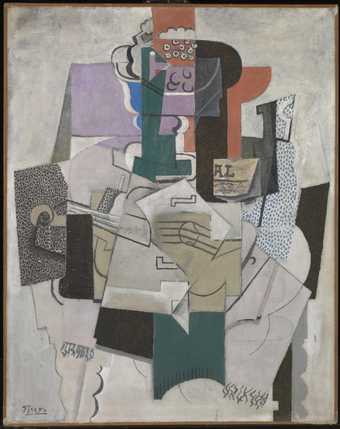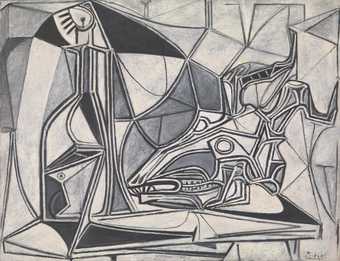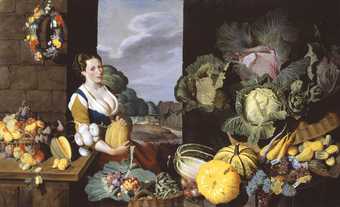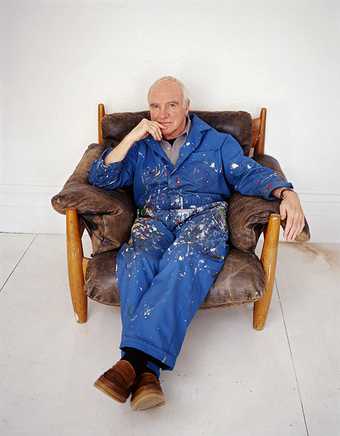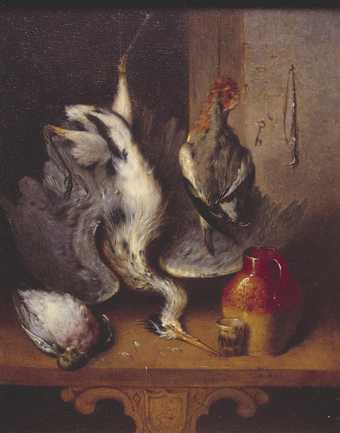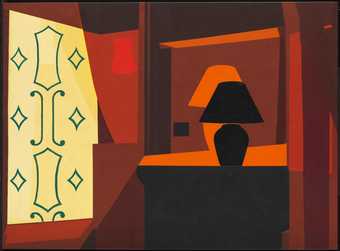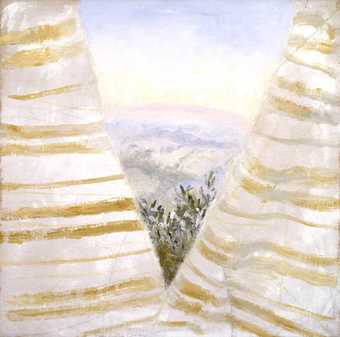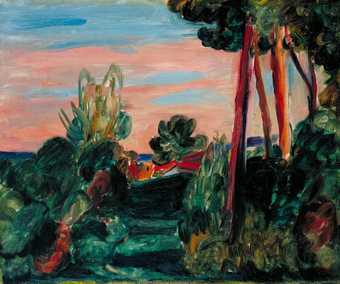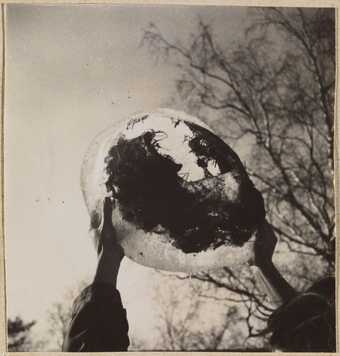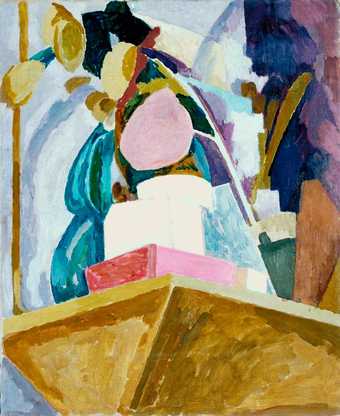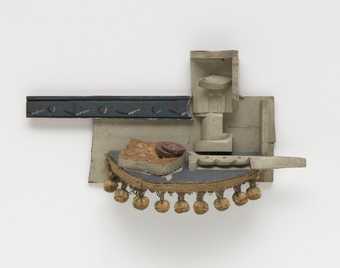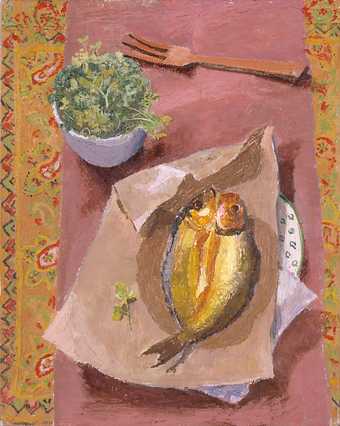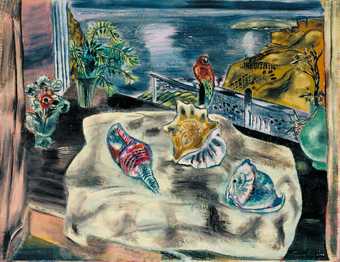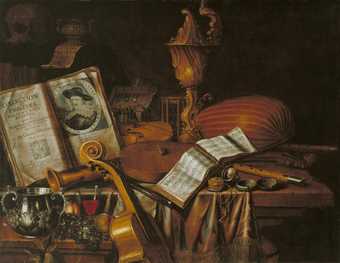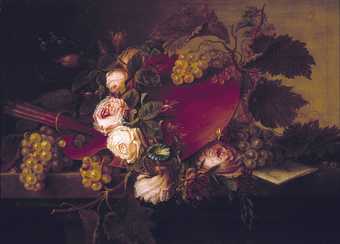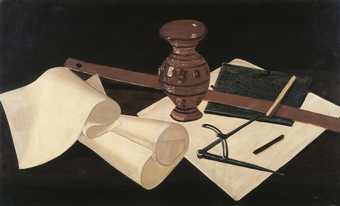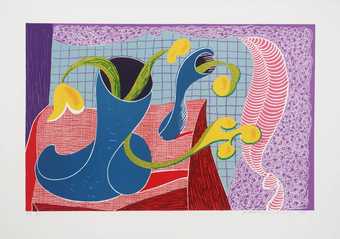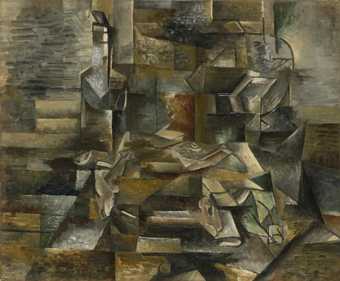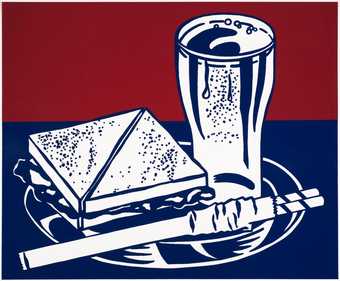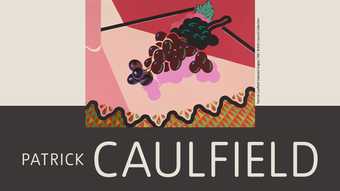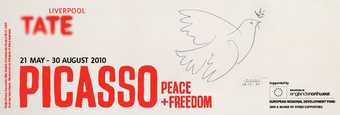Still life includes all kinds of man-made or natural objects, cut flowers, fruit, vegetables, fish, game, wine and so on. Still life can be a celebration of material pleasures such as food and wine, or often a warning of the ephemerality of these pleasures and of the brevity of human life (see memento mori).
In the hierarchy of genres (or subject types) for art established in the seventeenth century by the French Academy, still life was ranked at the bottom – fifth after history painting, portraiture, genre painting (scenes of everyday life) and landscape. Still life and landscape were considered lowly because they did not involve human subject matter.
In modern art simple still life arrangements have often been used as a relatively neutral basis for formal experiment, for example by Paul Cézanne, the cubist painters and, later in the twentieth century, by Patrick Caulfield.

